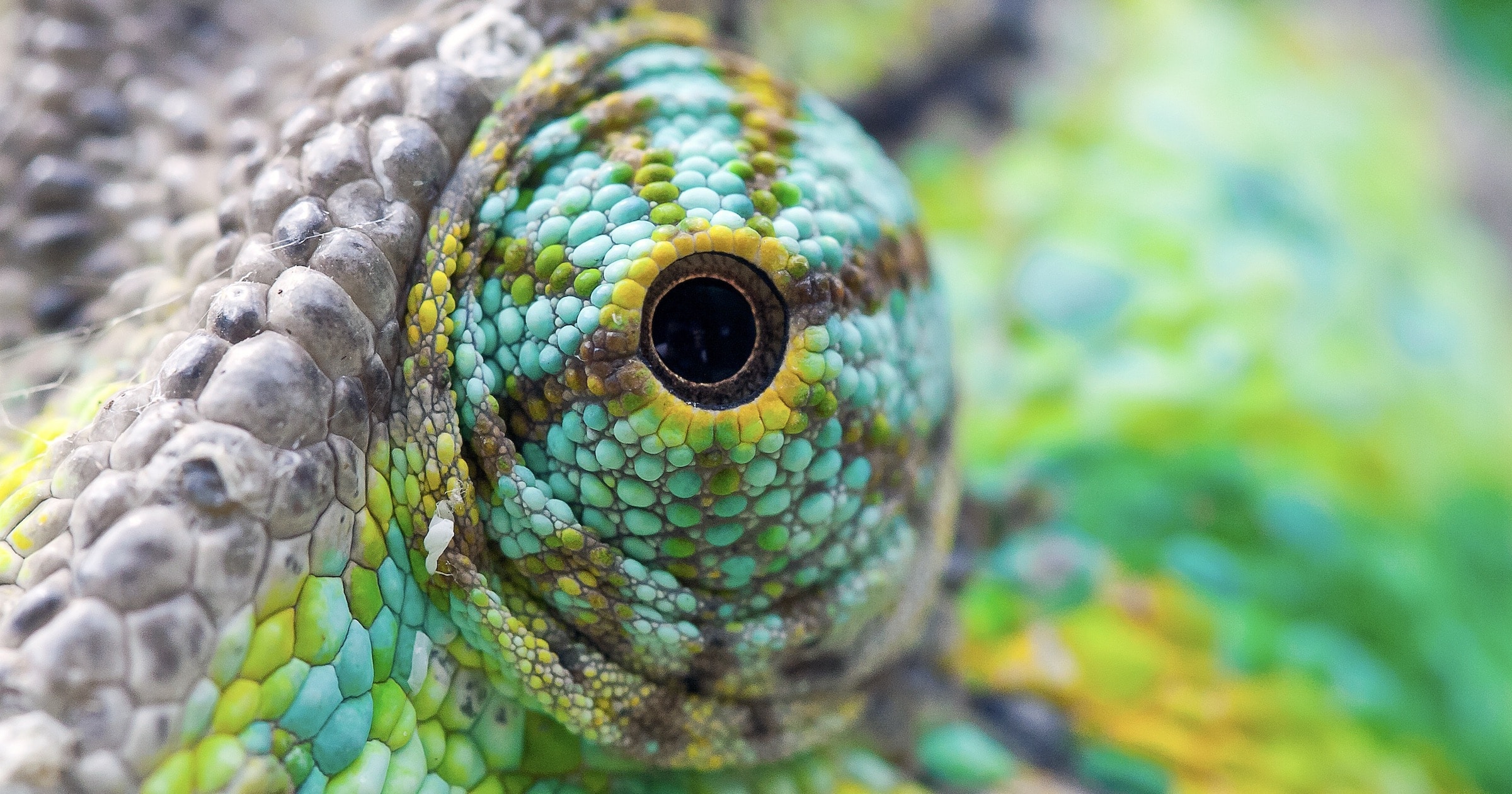 Evolution
Evolution
 Intelligent Design
Intelligent Design
Chameleon Vision — A Unique Marvel of Design

Most vertebrate animals have their eyes fixed in the eye sockets and cannot move them independently. As in humans, the images of both eyes are likely integrated by the visual cortex of the brain into a single unified visual field. Those animals with the eyes in lateral position have a monocular area of peripheral vision left and right, and a broad blind spot in front and the back of the head, which is likely integrated into a wide-angle view to detect predators. Some animals, especially predators and primates, have a more or less overlapping field of view in front of the head with binocular (stereoscopic) vision.
Static lateral eyes are also the rule in lizards, with a single exception: chameleons are the only land animals that have highly mobile eyes, which can move independently and look in two different directions at once. This means that two different monocular images have to be independently processed by the brain. Only when they have chosen a targeted prey animal are the two eyes locked into frontal view. The resulting stereoscopic vision requires integration of both images by the brain. Actually it is even a bit more complex than that, as was found by the study of Ketter Katz et al. (2015), who concluded:
We suggest that in chameleons, eye movements are not simply “independent”. Rather, at the gross level, eye movements are (i) disconjugate during scanning, (ii) conjugate during binocular tracking and (iii) disconjugate, but coordinated, during monocular tracking.
Also, “the ability to switch between synchronous and uncoupled saccadic eye movements has not been described for any other vertebrate” (Ott 2001). The latter study suggested that chameleons could be seen as a transition between independent and coupled eye use. However, this would make the totally unfounded and highly unparsimonious assumption that independent eye movement is the primitive state even though no other land vertebrate possesses this ability. The uniqueness of chameleon vision, which also includes unique anatomical features such as a negative lens and positive cornea (Ott & Schaeffel 1995), rather suggests that it is a singular adaptation for a particular niche.
A Major Problem for Darwinism
This of course involves a major problem for any Darwinian scenario how chameleon eyes could gradually evolve from the usual lateral eyes of their assumed lizard ancestors: i.e., how to gradually transition from an eye-brain system that is integrating two images into one monocular wide-angle image, to a system that processes two separate images simultaneously when the eyes look in different directions but integrates them into a stereoscopic 3D-image when both eyes are focusing on a prey. This task seems impossible to achieve for an unguided process, but is perfectly suited for intelligent design by a sufficietly capable engineer. No surprise, then, that the study by Ketter Katz et al. (2015) does not bother to discuss or even mention the evolution of chameleon vision. There is no plausible scenario to be found anywhere in the technical literature and there is also no transitional state among living or fossil chameleons. Yet another formidable empirical challenge to Darwinism.
A few days ago, my kids and I visited the wonderful tropical aquarium and zoo Haus des Meeres (House of the Sea) in Vienna, where I had the opportunity to film the stunning eyes of a chameleon in action (below). What a genuine masterpiece of engineering!
References
- Ketter Katz H, Lustig A, Lev-Ari T, Nov Y, Rivlin E & Katzir G 2015. Eye movements in chameleons are not truly independent – evidence from simultaneous monocular tracking of two targets. The Journal of Experimental Biology 218, 2097–2105. DOI: https://doi.org/10.1242/jeb.113084
- Ott M 2001. Chameleons have independent eye movements but synchronise both eyes during saccadic prey tracking. Experimental Brain Research 139(2), 173–179. DOI: https://doi.org/10.1007/s002210100774
- Ott M & Schaeffel F 1995. A negatively powered lens in the chameleon. Nature 373, 692–694. DOI: https://doi.org/10.1038/373692a0
